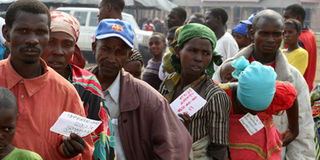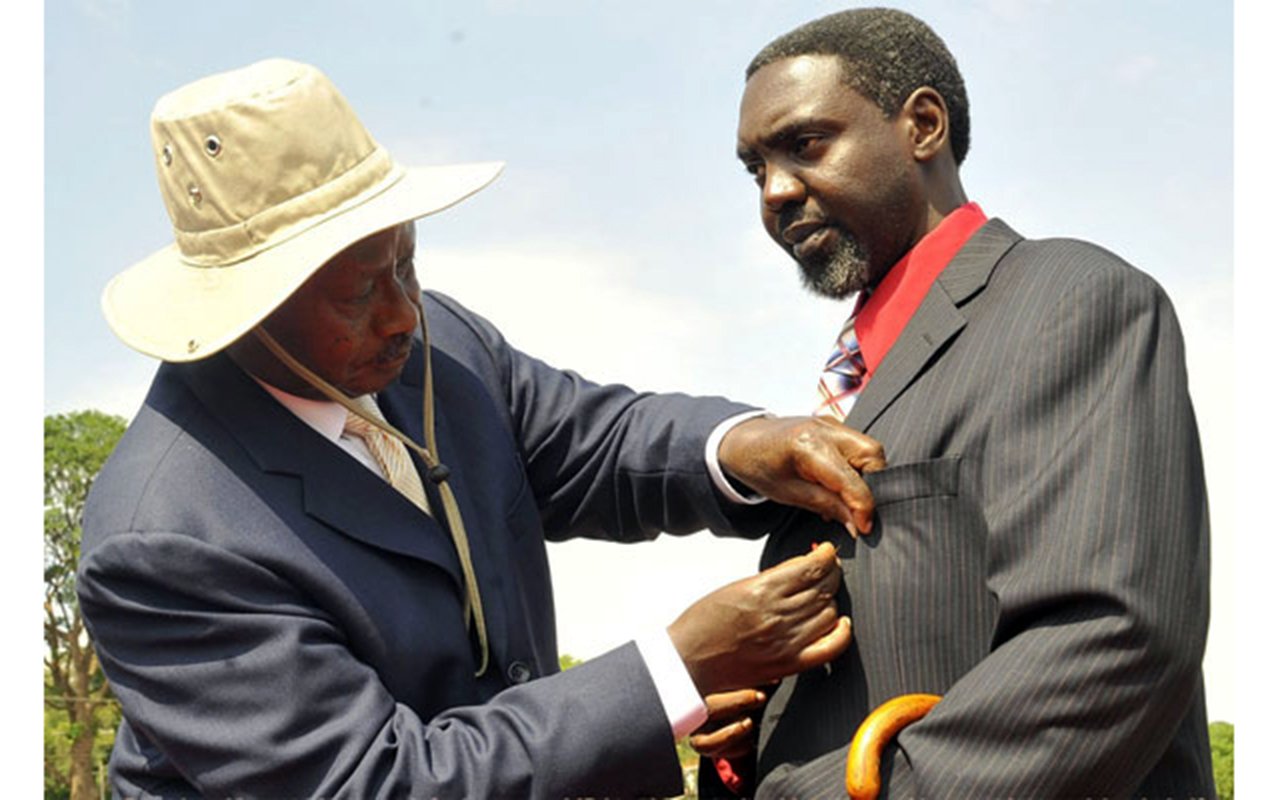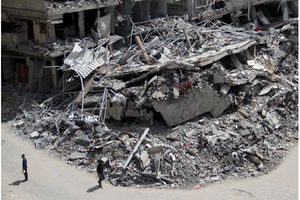DRC: A war magnet that has drawn in the neighbours

DR Congo residents fleeing the insurgency in the eastern part of the country register for refuge at Nyakabande transit centre on Thursday. PHOTO BY JOHN NJOROGE.
What you need to know:
Seeking refuge. About 200,000 Congolese have been displaced by the insecurity. About 80,000 of those are being hosted by Uganda.
MBARARA
The capture of Bunagana and other strategic areas, at the far eastern part of the DRC, bordering Uganda by the ethnic Tutsi-led M23 rebels recently, has ignited a fresh debate of what really ferments and who fans the endless conflict in Africa’s third largest nation.
The conflicts, stretching as far back as Mobutu Seseseko, in that part of the country continues to cost lives of millions of innocent civilians and condemning innumerable numbers to perpetual suffering.
Bunagana is a key trading point that lies close to Uganda, Rwanda and Tanzania.
Refugee situation
In the latest skirmishes, an estimated 20,000 civilians are said to have fled the region since Thursday when the fighting begun with about 16,000 registering in Kisoro District to seek refuge in Uganda.
Other victims remain trapped in the war zone without humanitarian assistance. Children, aged between one year and 14 and women form the bulk of those fleeing the war zone, according the Uganda Red Cross Society officials.
Few have been lucky to escape the fighting with any sort of property such as mattresses, saucepans, mats and clothes and hurtle through jungles for safety. “They look miserable; you see it in their faces. You see that they could not carry enough food, money and clothes. When you look deeper you see a lot of worry in their faces,” says Hajji Ahamed Doka, Kisoro District RDC who interfaces with the refugees often.
The UNHCR estimates that 200,000 Congolese to have been displaced by insecurity since the year begun.
Uganda alone hosts 80,000 refugees from eastern Congo according to commissioner for refugees in the Office of the Prime Minister, Mr David Kazungu.
Seeds of discord
The instability that has reigned in the region for close to two decades partly originates from political developments of 1994 when the Uganda-backed Tutsi-led Rwandese Patriotic Front (RPF) rebels overthrew the ethnic Hutu-dominated government of Rwanda led by President Juvenal Habyarimana.
Over one million Hutu fled into eastern DRC (Zaire) during the reign of President Mobutu Sese Seko an ally of Habyarimana. Uganda and Rwanda-backed Laurent Kabila invaded Zaire in 1996 overthrowing Mobutu in 1997 bringing to end his 32 year reign.
In the same year relations between Kabila on one hand and his backers on the other severed and he ordered Uganda and Rwanda out of DRC. Then followed a chain reaction that led to the formation of various rebel groups all of which operated in the eastern part of the DRC where the Kinshasa government had virtually no control. The Ressemblement Congolais pour la Democratie (RCD) and the Movement pour la Liberation du Congo (MLC) were backed by Rwanda and Uganda respectively.
The intervention of Namibian, Zimbabwean and Angolan forces on the side of Laurent Kabila culminated into the 1999 Lusaka-Zambia Accord that called for ceasefire. Uganda, Rwanda, Namibia, Angola, Zimbabwe and DR Congo signed it. It also provided for withdrawal of foreign troops, deployment of UN peace keepers and launching of Inter Congolese Dialogue to prepare for elections.
Kabila was accused of suppressing internal political activities and hindering dialogue. There were reports of plundering natural resources by players in the conflict that became a subject for UN investigation and Uganda and some of its army officials were found culpable and asked to pay $10b to DRC. President Kabila was then assassinated on January 18, 2001 by one of his body guards and was one week later succeeded by his son Joseph Kabila – the current president.
Neighbourly disputes
From I996 to-date, the eastern part of DRC has been a hotbed of conflict and home to different shades of rebel outfits, most claimed to be sponsored by ‘neighbouring’ countries as proxy militias to either fight Kabila’s government or forestall possible rebel attacks that might threaten the security of these ‘neighbouring’ countries.
The RPF government in Rwanda was particularly vulnerable to the Hutu Interahamwe extremists who had taken refuge after the Rwanda genocide. Gen. Laurent Nkunda was arrested in 2009 by Rwanda after the country was accused by the international community of backing the warlord. These militias have also been accused of pillaging the DRC of resources like diamonds, tin, gold and coltan teaming in the region for Rwanda.
Gen. Bosco Ntaganda, the latest of these rebel leaders who is indicted by International Criminal Court is another warlord said to have been engineering conflict in the region in Rwanda’s interest. Gen Ntaganda’s CNDP army was on May 23, 2009 integrated in the Kabila-led government army.
But in a classic fallout, part of CNDP accused Ntaganda of being in bed with Kabila at the expense of the whole team. The group, M23 led by Col. Sultan Makanga broke away from the Kabila government claiming Kabila has reneged on the terms of the peace deal. It is Col. Makanga’s group that has denounced Gen. Ntaganda as a traitor, captured Bunagana and also threatened to capture Goma, the main town in eastern province.
Sinister motives
Skeptics of the current conflict in Bunagana believe that the M23 and CNDP could be playing a jigsaw around President Kabila to hide their personal interests and those of their sponsors in the wider scheme of things of a possible plan to split the DRC into two countries.
The case of mutineers of insignificant numbers compared to the government army of over 100,000 soldiers who have sent the later packing, some 600 fleeing into Uganda, raises suspicion on the commitment of soldiers to the Kabila government.
“The M23 rebels are well-organised, they have superior weapons compared those of Congolese soldiers. They are also well versed with the terrain they have been in these jungles. They seem to have the backing of local people, they give them information,” said a source that monitors the on-goings who did not want to be named.
The rebels, according to this source, have new uniforms and other logistics supplied by a neighbouring country.
The UN has accused Rwanda of sponsoring the rebels which President Paul Kagame has denied and described as “fictitious” according to Aljazeera. Mr Kagame has maintained that the UN and DR Congo want Rwanda to play a police role for the Kabila government which it is not ready to do and asked the body to use its well-funded UN army in the region to pacify the region than blaming his government.
Bishop Jean Runiga, the M23 political coordinator, on Wednesday at Bunagana denied any Rwandan involvement.
“We have no support from Rwanda. We are supported by the people of Congo. The weapons you see were abandoned by Congolese army as they fled. The uniforms we put are of different countries,” he said at a press conference. He accused the Kabila government of lack of proper accountability, abuse of human rights and oppression of minority groups.
Uganda which has soldiers in northern DRC hunting for Joseph Kony says it is not involved in the Eastern Congo conflict much as the government nursed interests to hunt for ADF rebels said to be in Ituri but was not allowed. “Uganda has no single soldier in Eastern Congo, this is a sovereign country. Uganda has Congo government at heart, that is why we took care of their soldiers. We cannot deal with rebels,” UPDF second division spokesperson Capt. Peter Mugisa said early this week.
Uganda has convened an inter-ministerial meeting on the security situation in eastern DR Congo, on the side-lines of the on-going African Union meeting in in Addis-Ababa. Critics continued to hit at Rwanda, Uganda and some western powers including US and UK, the major donors to Rwanda which is seen as the forerunner in the conflict, of plunder and exploitation.
The US and the UK are believed to have sponsored the overthrow of the Hutu-led government in Rwanda and that of Mobutu both being France-leaning then, so as to gain easy access into mineral rich region of DRC.
Mr Vincent Paddy, 50, a post graduate bar course student at the Law Development Centre who is a keen follower of regional and global politics says: “US and UK are behind this conflict. They sponsored wars in the Great Lakes region which have led to change of governments in Rwanda and DR Congo. Their aim was to cut off France and reach for those minerals in Congo. They had to go through Rwanda and Uganda.”
Mr Paddy says as long as interests of the US and UK are catered for they will leave people in Eastern Congo to suffer and that Rwanda uses this relationship to protect and entrench ethnic Tutsi interests in the region and the western powers are not bothered.
“We are living in a world where man eats man. It is like in a national park where lions feed on kobs. There are people whose human rights are protected more than others. If Hutus can’t fight they will remain slaves, no one will recognise them,” he says.
He said UN peace-keeping mission in Congo MONUSCO is not after all protecting civilians but it is being used to cover interests of the UK and the US. UN has announced it will back DR Congo soldiers to protect Goma town against rebels but the move is seen by some as mere rhetoric and cosmetic. “Humanitarian motive is just on paper. The force would even be helping the rebels like it has done in the past wars like what happened in Rwanda. We are likely to see conflict raging on for years and then the split of Congo into two countries,” says Paddy.
“Why Goma and not any other place that is being threatened by the rebels? This is where they have their base. With all the resources and weapons they have they can’t protect civilians. Today they are with rebels, and then they are with the government soldiers the next day. Civilians don’t trust them,” says Hajji Doka.
Congo split
The idea of splitting Congo into two countries has been a subject of academic and political discussion at regional and global levels. Kabila’s authority is absent in most parts of eastern and northern eastern Congo because it is too big to administer.
The architects of the conflict could be trying to create conditions for the split. In the likely event that it is split, the Tutsi, not any other tribe will reign over the curved out territory.
The possibility of a Congo split is not farfetched. Drawing lessons from South Sudan, countries bordering the troubled eastern Congo could see their own long term security and strategic interests well-served in the birth of a new neighbourly country; it could be a Goma, Kivu or Eastern Congo republic.




